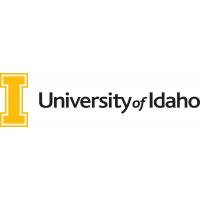These data are associated with the manuscript "Linking agricultural diversification practices, soil arthropod communities, and soil health". Data were collected from the strip plots associated with the Landscapes in Transition Project (www.pnwlit.org). We used these data to evaluate the effects of agricultural diversification through rotation on soil arthropods and soil properties using replicated large-plot field studies representing two climatically distinct agroecological classes in the dryland cereal-growing region of the inland Pacific Northwest, USA. We investigated how different three-year annual crop rotations affected soil arthropod biodiversity and community structure. Treatments reflected “business-as-usual” rotations in dryland systems and diversified rotations achieved by incorporating novel winter pea or forage crops. We also assessed relationships between the Soil Biological Quality index (QBS-ar), which uses soil arthropods as bioindicators of soil health, and other biological and physiochemical soil health indicators. We collected 710 community samples with 82,509 arthropod specimens across 66 taxa. Novel crops in diversified rotations promoted soil arthropod abundance and biodiversity relative to crops they could replace in rotation. Crop type determined community composition. Most taxa driving differences in community structure were predators and detritivores associated with winter pea and forage crops. In addition to effects on soil arthropods associated with specific crops, effects were also detected across rotations. Incorporating winter pea into rotations improved QBS-ar across entire rotations, not just in the winter pea phases, in both AECs. Links between QBS-ar and other soil health indicators were complex and varied by AEC.
Data Use:
License:
Creative Commons Attribution (CC-BY)
Recommended Citation:
Elmquist D, Kahl KB, Johnson-Maynard J, Eigenbrode S. 2023. Data from: Linking agricultural diversification practices, soil arthropod communities, and soil health (Version 1.0) [Data set]. University of Idaho. https://doi.org/10.7923/rcbw-kx90
Funding
USDA-NIFA CAP: 2017-68002-26819
Data and Resources
| Field | Value |
|---|---|
| Modified | 2023-09-27 |
| Release Date | 2023-05-22 |
| Publisher | |
| Homepage URL | |
| Identifier | 3253bb59-5dde-470f-990f-b5d04f4f1b51 |
| Spatial / Geographical Coverage Area | POINT (-117.539871971 47.120303021904) POINT (-116.82433547392 46.516149628551) |
| Spatial / Geographical Coverage Location | St. John, WA, USA and Genesee, ID, USA |
| Temporal Coverage | Tuesday, May 22, 2018 - 00:00 to Friday, September 25, 2020 - 00:00 |
| Language | English (United States) |
| License | |
| Author | |
| Contact Name | Dane Elmquist |
| Contact Email | |
| Public Access Level | Public |
| DOI | 10.7923/rcbw-kx90 |


![[Open Data]](https://assets.okfn.org/images/ok_buttons/od_80x15_blue.png)